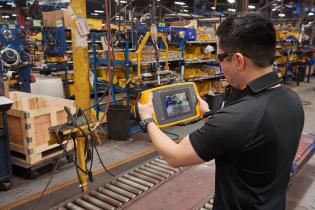Renewable energy
Troubleshooting Common Solar Photovoltaic System Problems
With the push to energy independence and renewable energy sources, HVAC technicians need to know how to troubleshoot photovoltaic systems
Targeting Safety in Photovoltaic System Installation and Maintenance
Late on a Sunday afternoon the Kern County Fire Department responded to a call at a store on Rosedale Highway in Bakersfield, California. Crews found that a row of solar panels on the roof had caught fire. Some of the panels were still live when the crew arrived, so the fire crew had to take extra precautions until electrical power could be disconnected.
Renewable energy: Maintenance and health of battery storage systems
Importance of investing in battery storage systems health and maintenance.
How Good Data Helps Manage PV and Microgrid Performance
How to use data to prove the value of PV and microgrids in order to provide a safer, cheaper, more secure and more reliable distributed energy electric power system.
